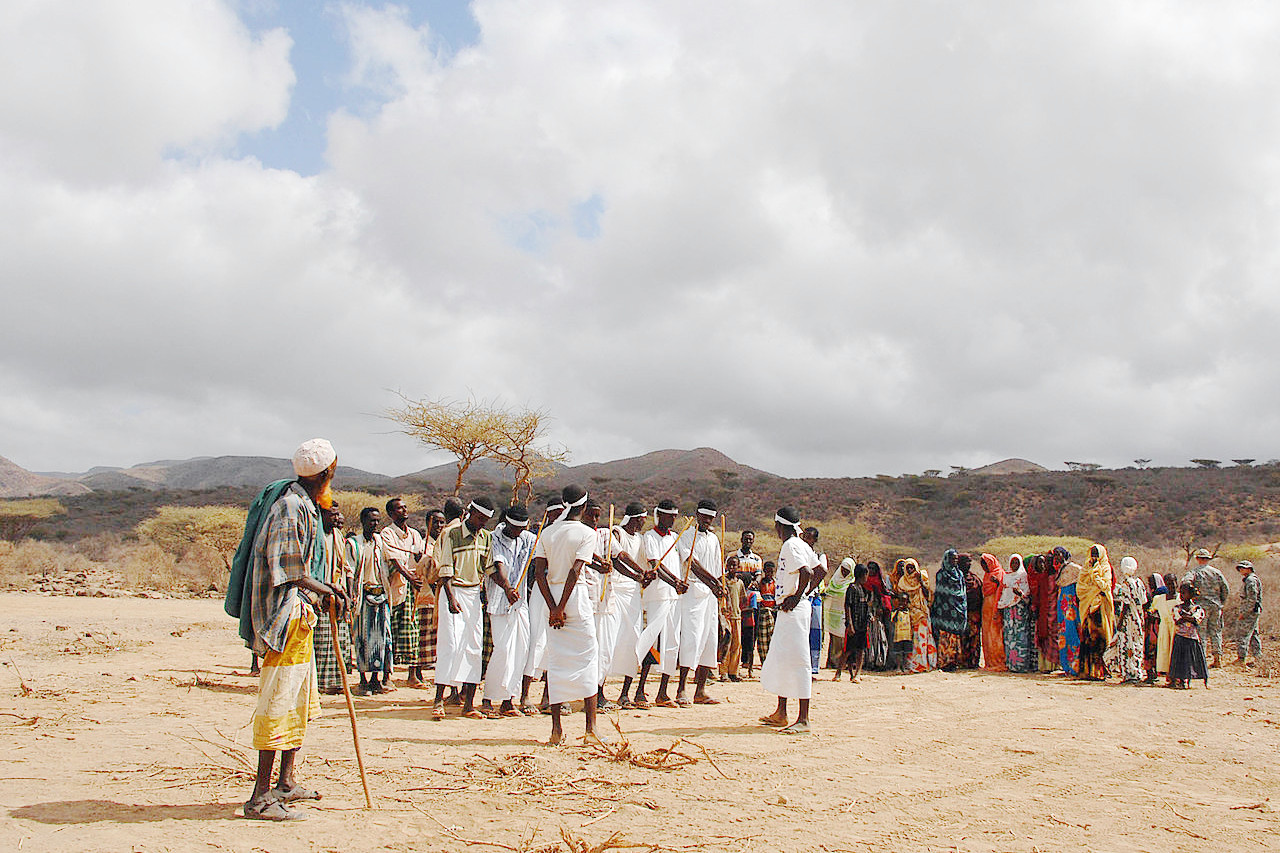The Climate of
Djibouti
 People gather to dance the Horra, a traditional dance of celebration, at Ad Bouya
People gather to dance the Horra, a traditional dance of celebration, at Ad Bouya
Climate Map
 Climate map of Djibouti
Climate map of Djibouti
What is the climate of Djibouti like?
Djibouti is a small country at the entrance to the Red Sea, with a coastline on the southern shores of the Gulf of Aden. It is about as big as Wales or the state of Vermont. It is bordered by Ethiopia on the west and Somalia on the south.
The climate is dry and very hot. The hot, dry hamsin wind increases the already-blistering summer temperatures, which can rise as high as 45°C (113°F). During the hot season, from May to September, daytime temperatures in the capital average 36°C (97°F) and the northeastern monsoon blows. During the warm season, from October to April, average daytime temperatures moderate to 26°C (78°F).
There is a low-lying coastal plain which is very hot all the year round but has lower temperatures at the period of low sun. Inland there are extensive areas above 600 meters (2,000 feet), where temperatures and humidity are a little lower than on the coast.
Annual rainfall is almost everywhere below 250 millimeters (10 inches) and is much less in many places. The scanty rainfall on the coast is more likely to come in the period November to March, but inland the rains are more probable during the period of high sun from April to October. Hours of sunshine average from eight to nine hours a day around the year.
| Climate data for Djibouti City (1961–1990) | |||||||||||||
|---|---|---|---|---|---|---|---|---|---|---|---|---|---|
| Month | Jan | Feb | Mar | Apr | May | Jun | Jul | Aug | Sep | Oct | Nov | Dec | Year |
| Average high °C (°F) | 28.7 (83.7) | 29.0 (84.2) | 30.2 (86.4) | 32.0 (89.6) | 34.9 (94.8) | 39.0 (102.2) | 41.7 (107.1) | 41.2 (106.2) | 37.2 (99.0) | 33.1 (91.6) | 30.8 (87.4) | 29.3 (84.7) | 33.9 (93.0) |
| Daily mean °C (°F) | 25.1 (77.2) | 25.7 (78.3) | 27.0 (80.6) | 28.7 (83.7) | 31.0 (87.8) | 34.2 (93.6) | 36.4 (97.5) | 36.0 (96.8) | 33.1 (91.6) | 29.3 (84.7) | 26.9 (80.4) | 25.4 (77.7) | 29.9 (85.8) |
| Average low °C (°F) | 21.5 (70.7) | 22.5 (72.5) | 23.8 (74.8) | 25.4 (77.7) | 27.0 (80.6) | 29.3 (84.7) | 31.1 (88.0) | 30.6 (87.1) | 28.9 (84.0) | 25.6 (78.1) | 23.1 (73.6) | 21.6 (70.9) | 25.9 (78.6) |
| Average precipitation mm (inches) | 10.0 (0.39) | 18.8 (0.74) | 20.3 (0.80) | 28.9 (1.14) | 16.7 (0.66) | 0.1 (0.00) | 6.2 (0.24) | 5.6 (0.22) | 3.1 (0.12) | 20.2 (0.80) | 22.4 (0.88) | 11.2 (0.44) | 163.5 (6.44) |
| Source: Hong Kong Observatory | |||||||||||||
References
- E. A. Pearce, Charles Gordon Smith, (1990) The Hutchinson World Weather Guide, John Murray Press. ISBN 1859863426
- Timothy L. Gall, (ed.), (2003), Worldmark Encyclopedia of the Nations, Eleventh Edition, Thomson Gale
- Hugh Chisholm, (ed.), (1911), Encyclopædia Britannica, Eleventh edition, Cambridge University Press
The Climate of
Djibouti

In summary:
The climate is very hot, and rainfall is sparse and erratic. During the hot season, from May to September, daytime temperatures in the capital average 36°C (97°F) and the northeastern monsoon blows. During the warm season, from October to April, average daytime temperatures moderate to 26°C (78°F).
Humidity is high all year, but annual rainfall averages around 160 mm (6 in).